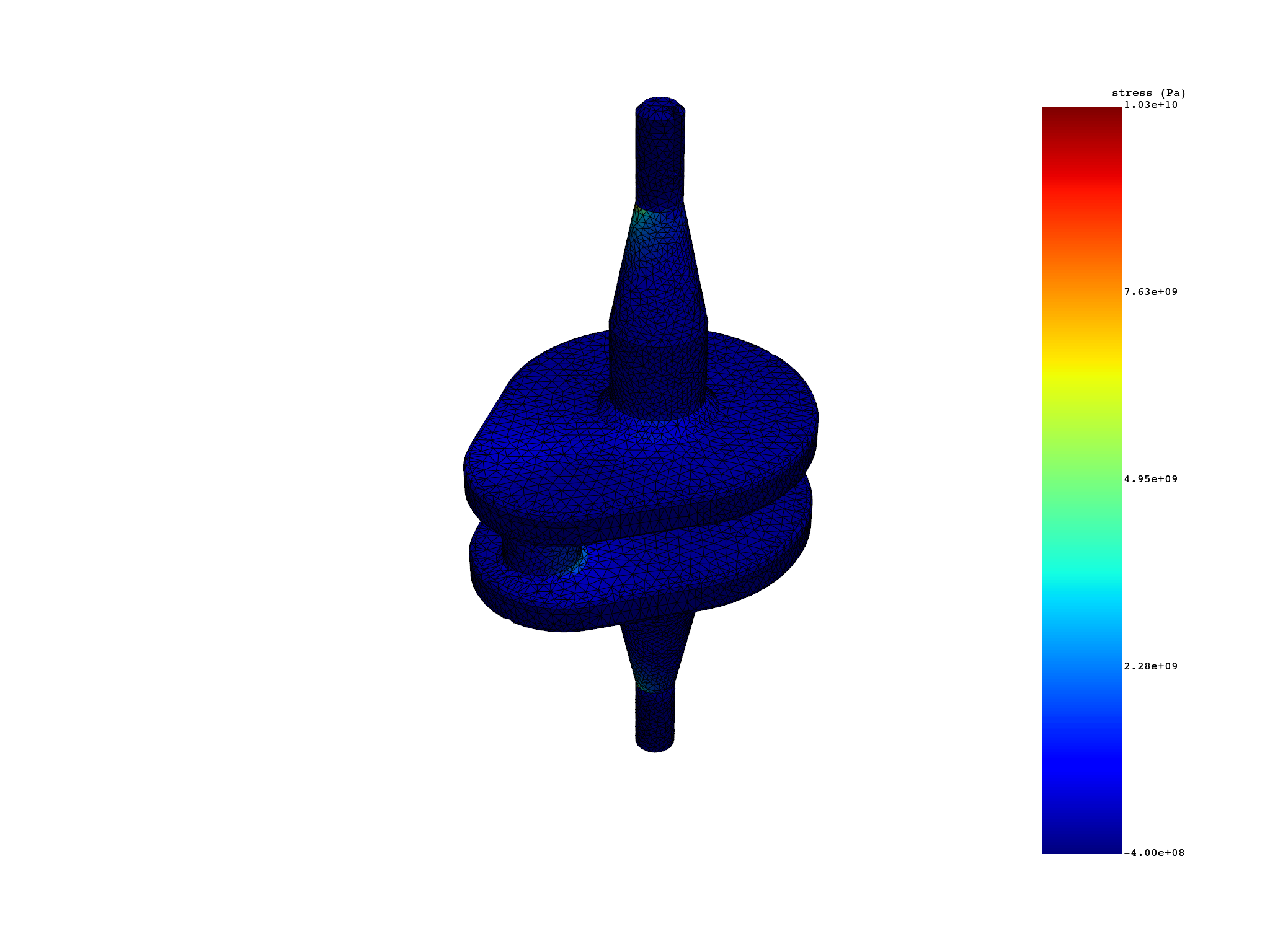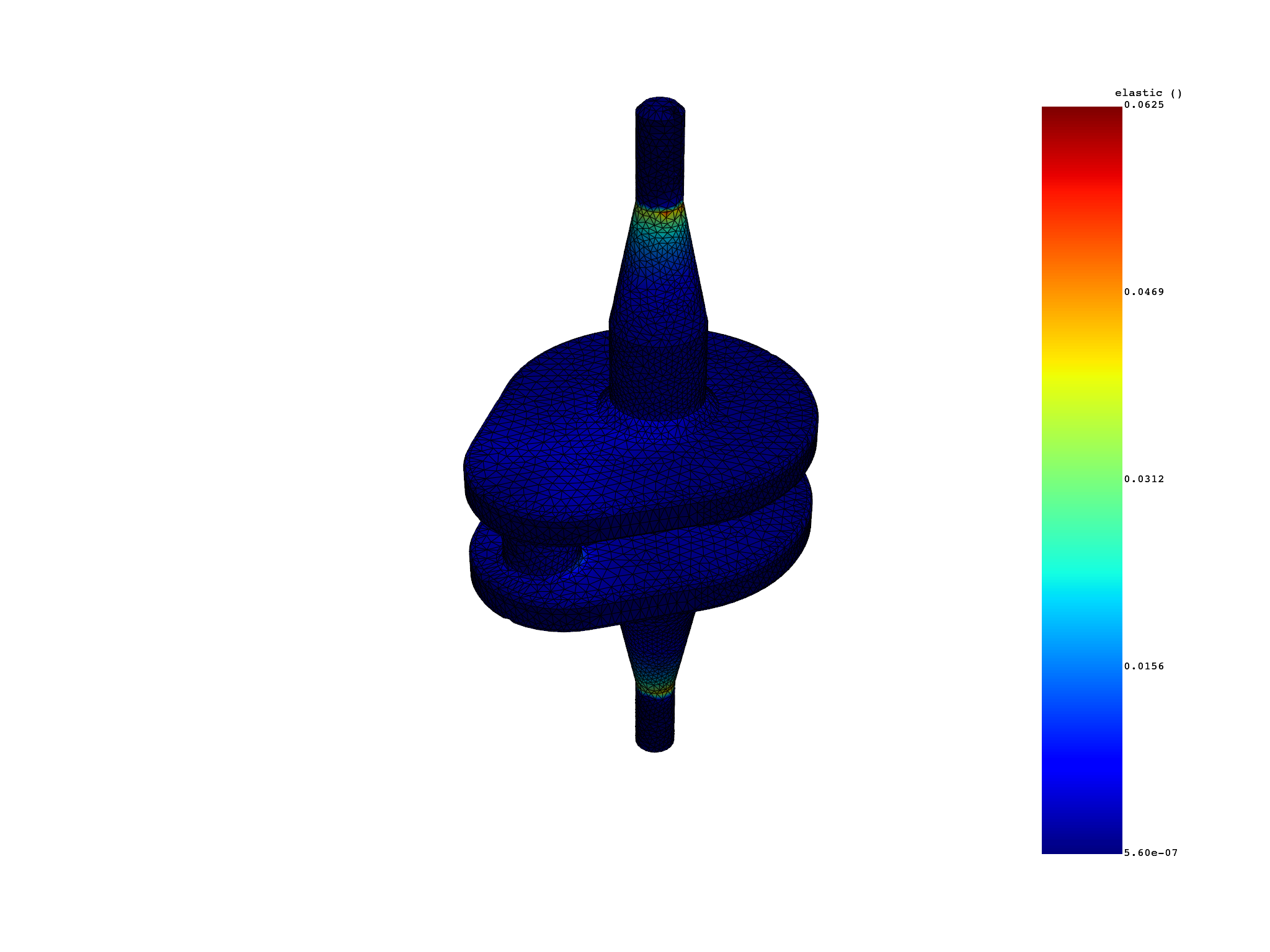Note
Go to the end to download the full example code.
Reduce model size by using the mesh external layer for result and mesh extraction#
This example shows postprocessing on a mesh external layer for a static analysis. The external layer is the layer of solid elements with at least one facet facing the outside of the geometry.
This feature, available for all types of mechanical simulation, allows you to reduce the size of both the mesh and the extracted data to improve processing performance. Because larger stresses and strains are usually located on the skin of a model, computing the results on the external layer provides equivalent maximum values in most cases.
Perform required imports#
Perform required imports. This example uses a supplied file that you can
get using the examples module.
from ansys.dpf import post
from ansys.dpf.post import examples
Get Simulation object#
Get the Simulation object that allows access to the result. The Simulation
object must be instantiated with the path for the result file. For example,
"C:/Users/user/my_result.rst" on Windows or "/home/user/my_result.rst"
on Linux.
example_path = examples.download_crankshaft()
# to automatically detect the simulation type, use:
simulation = post.load_simulation(example_path)
# to enable auto-completion, use the equivalent:
simulation = post.StaticMechanicalSimulation(example_path)
# print the simulation to get an overview of what's available
print(simulation)
Static Mechanical Simulation.
Data Sources
------------------------------
/opt/hostedtoolcache/Python/3.10.19/x64/lib/python3.10/site-packages/ansys/dpf/core/examples/result_files/crankshaft/crankshaft.rst
DPF Model
------------------------------
Static analysis
Unit system: MKS: m, kg, N, s, V, A, degC
Physics Type: Mechanical
Available results:
- node_orientations: Nodal Node Euler Angles
- displacement: Nodal Displacement
- velocity: Nodal Velocity
- acceleration: Nodal Acceleration
- reaction_force: Nodal Force
- stress: ElementalNodal Stress
- elemental_volume: Elemental Volume
- stiffness_matrix_energy: Elemental Energy-stiffness matrix
- artificial_hourglass_energy: Elemental Hourglass Energy
- kinetic_energy: Elemental Kinetic Energy
- co_energy: Elemental co-energy
- incremental_energy: Elemental incremental energy
- thermal_dissipation_energy: Elemental thermal dissipation energy
- elastic_strain: ElementalNodal Strain
- elastic_strain_eqv: ElementalNodal Strain eqv
- element_orientations: ElementalNodal Element Euler Angles
- structural_temperature: ElementalNodal Structural temperature
------------------------------
DPF Meshed Region:
69762 nodes
39315 elements
Unit: m
With solid (3D) elements
------------------------------
DPF Time/Freq Support:
Number of sets: 3
Cumulative Time (s) LoadStep Substep
1 1.000000 1 1
2 2.000000 1 2
3 3.000000 1 3
Extract displacement data#
Extract displacement data on the external layer.
displacement_ext = simulation.displacement(
external_layer=True
) # default is external_layer=False
displacement_ext.plot()
print(
f"number of nodes with external_layer=True: {len(displacement_ext.index.mesh_index)}"
)
print(f"number of nodes with external_layer=False: {len(simulation.mesh.node_ids)}")
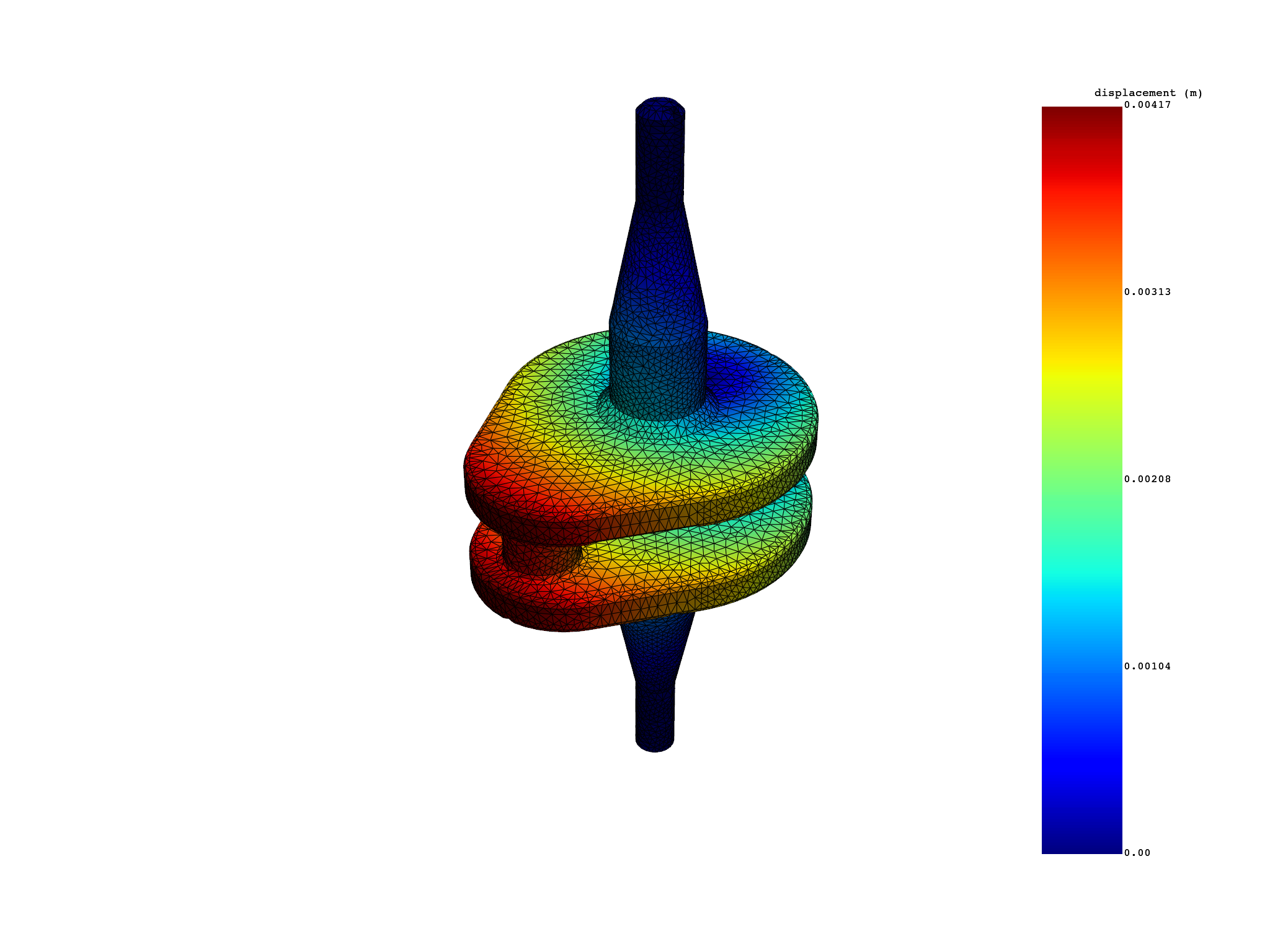
number of nodes with external_layer=True: 64079
number of nodes with external_layer=False: 69762
Extract stress and strain data#
Extract stress and elastic strain data on the external layer. You can easily compute averages and invariants on the external layer because the connectivity of the external layer elements remains unchanged.
elemental_stress_ext = simulation.stress_principal_elemental(
components=[1], external_layer=True
)
elemental_stress_ext.plot()
print(
f"number of elements with external_layer=True: {len(elemental_stress_ext.index.mesh_index)}"
)
print(
f"number of elements with external_layer=False: {len(simulation.mesh.element_ids)}"
)
elastic_strain_eqv_ext = simulation.elastic_strain_eqv_von_mises_nodal(
external_layer=True
)
elastic_strain_eqv_ext.plot()
number of elements with external_layer=True: 31374
number of elements with external_layer=False: 39315
(None, <pyvista.plotting.plotter.Plotter object at 0x7f25082c6ad0>)
Extract external layer on a selection of elements#
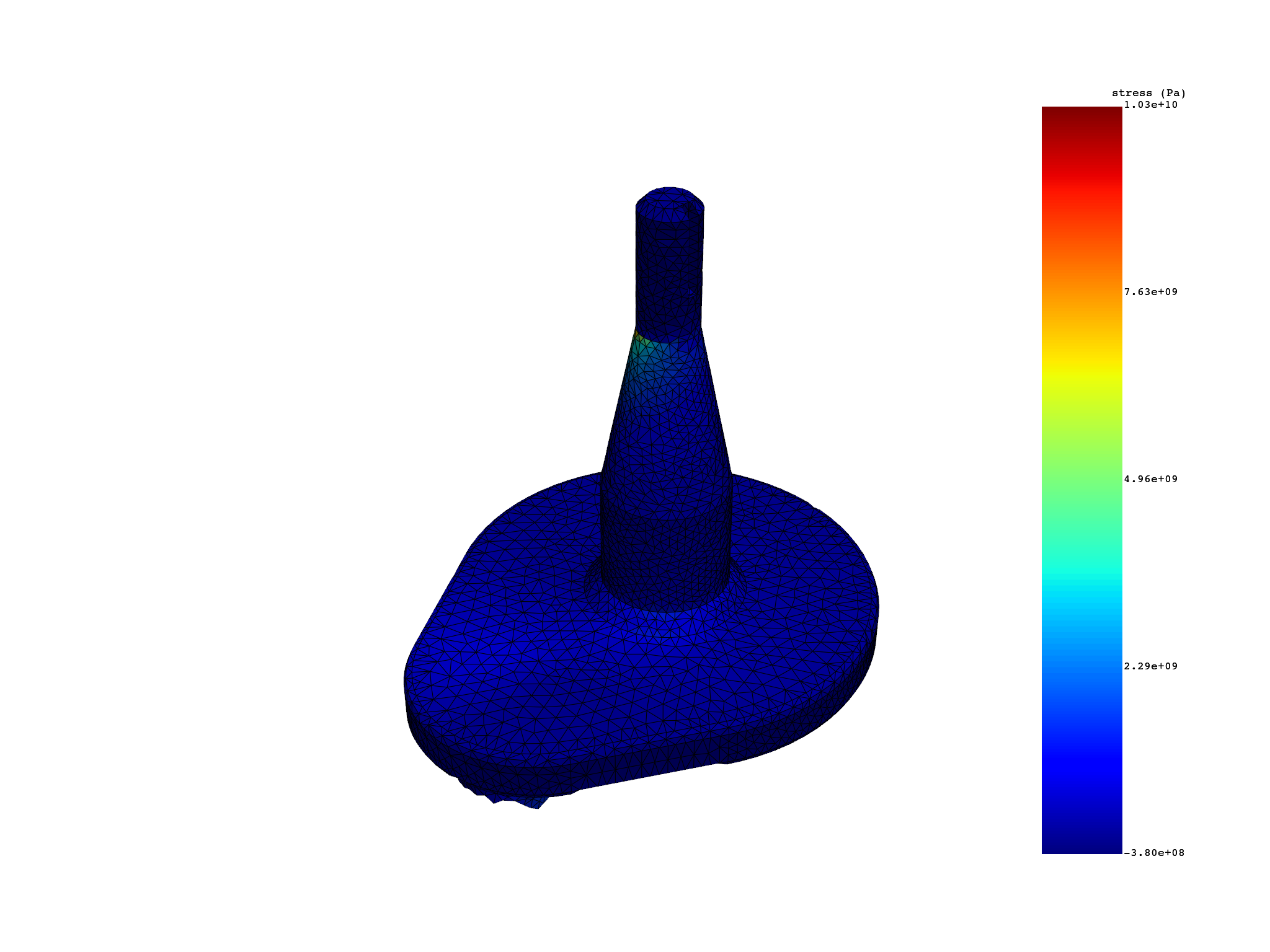
(None, <pyvista.plotting.plotter.Plotter object at 0x7f25082c6200>)
Extract external layer on a selection of elements for nodal results#
elastic_strain_eqv_ext = simulation.elastic_strain_eqv_von_mises_nodal(
external_layer=elements
)
elastic_strain_eqv_ext.plot()
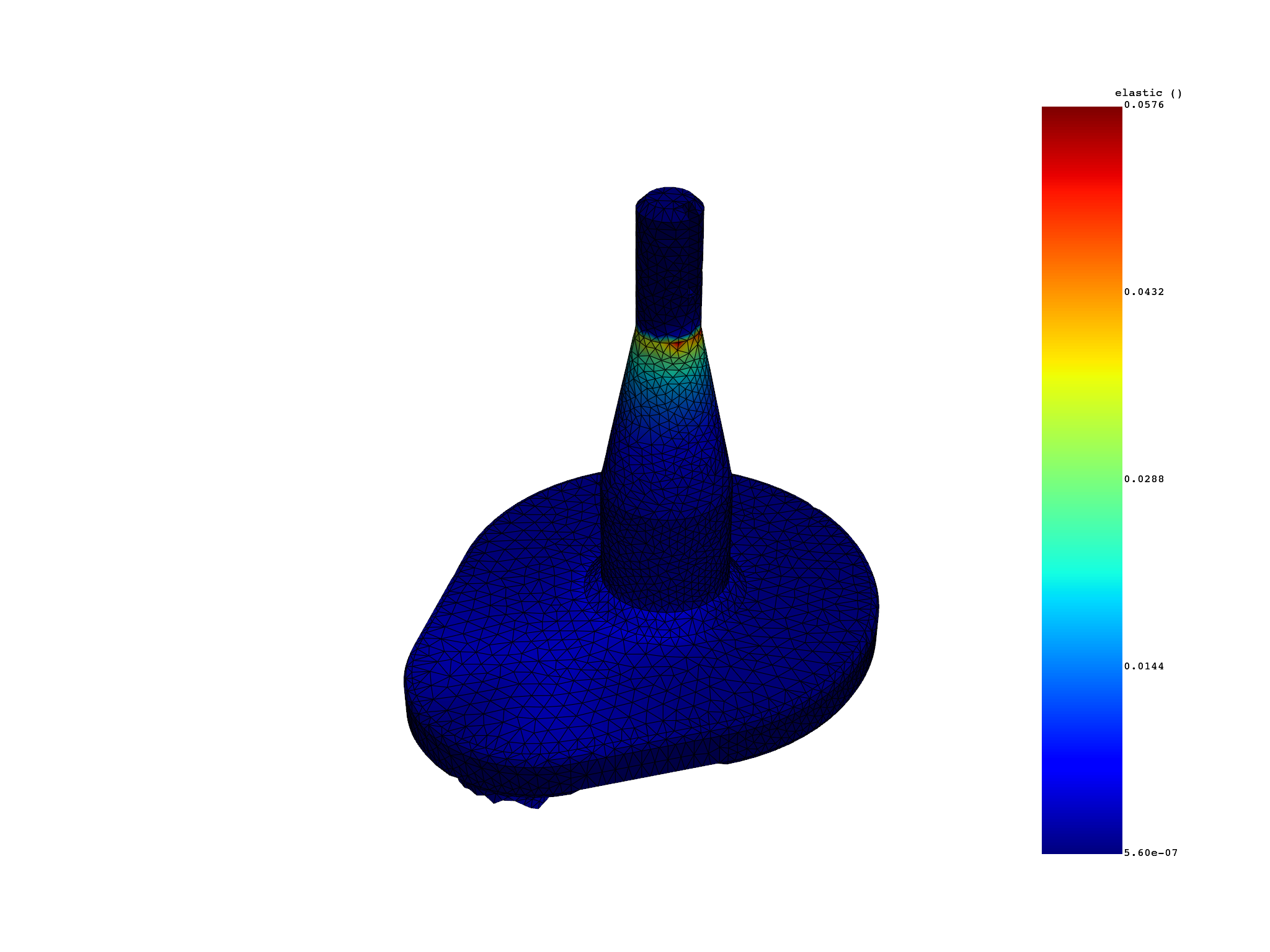
(None, <pyvista.plotting.plotter.Plotter object at 0x7f25082c4280>)
Extract external layer on a selection of elements and scope results#
sub_elements = []
for i in range(0, int(len(elements) / 2)):
sub_elements.append(elements[i])
elemental_stress_ext = simulation.stress_principal_elemental(
external_layer=elements, element_ids=sub_elements
)
elemental_stress_ext.plot()
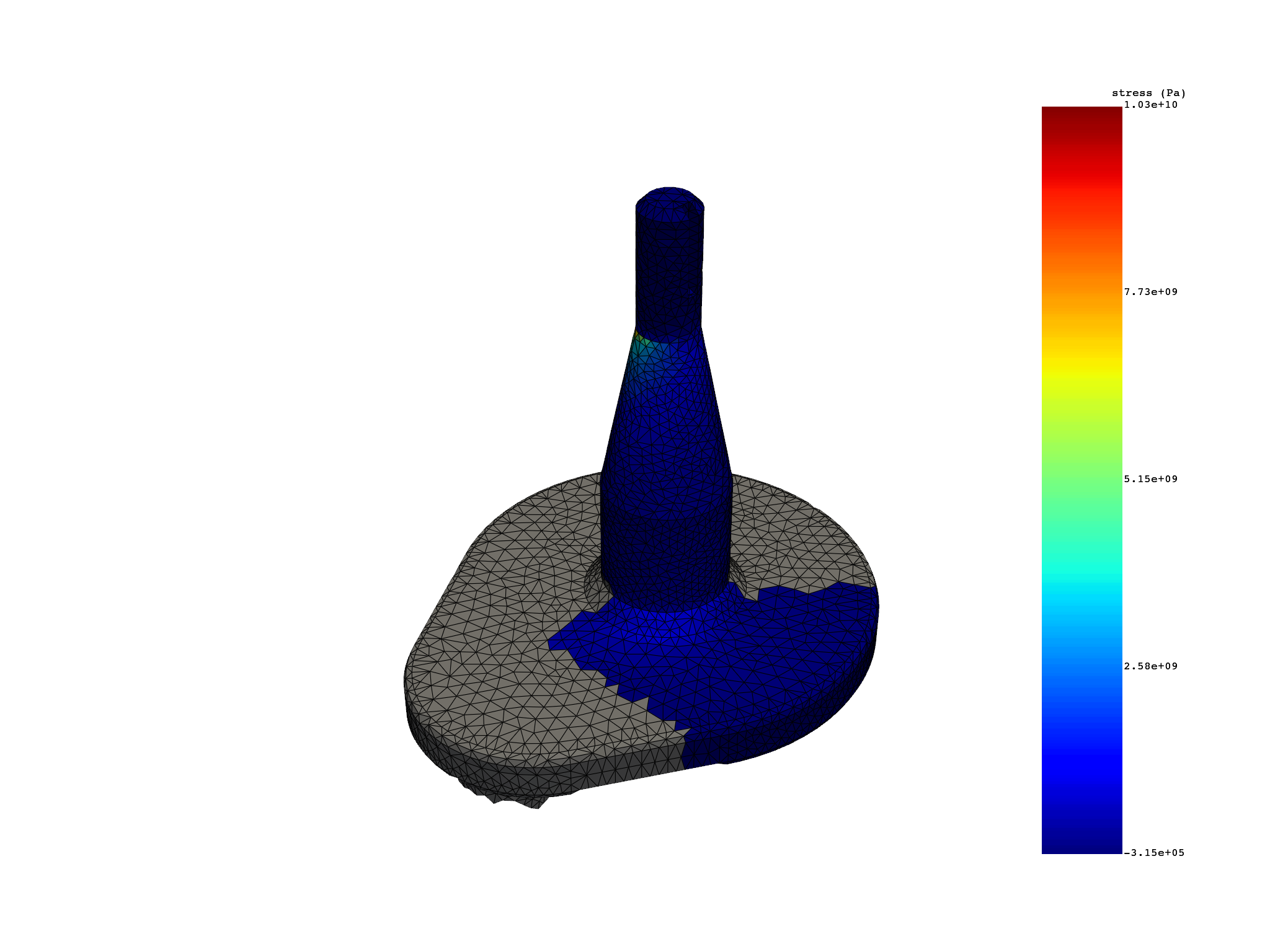
(None, <pyvista.plotting.plotter.Plotter object at 0x7f25082c6ce0>)
Total running time of the script: (0 minutes 8.761 seconds)


